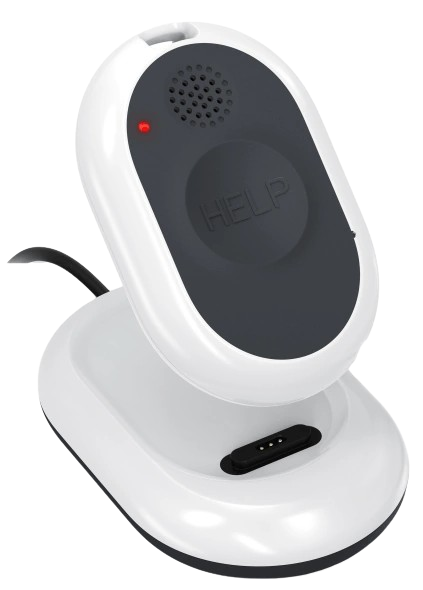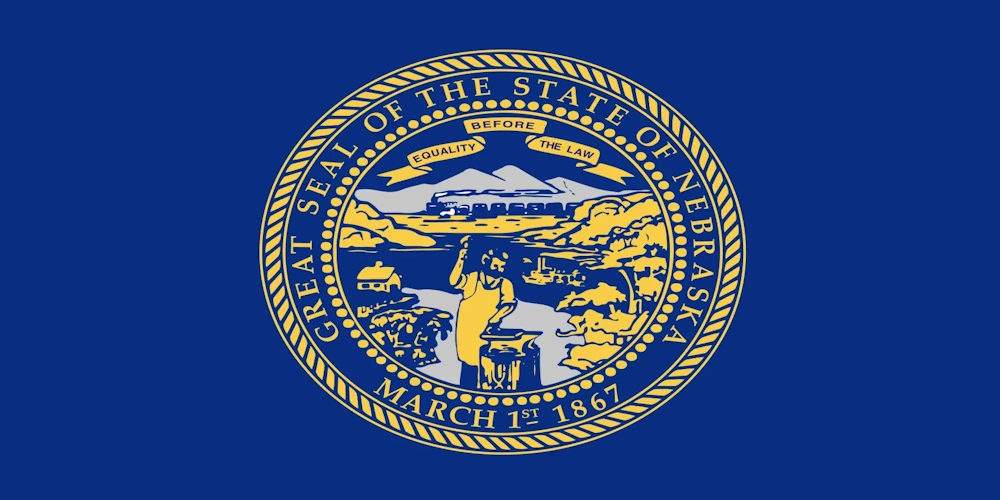Guam, a U.S. territory in the Western Pacific, supports a wide range of industries including construction, public utilities, transportation, and military support services. Many of these sectors rely on individuals who work alone in remote, high-risk, or unsupervised environments. These lone workers face unique hazards and require special safety considerations to ensure their well-being and compliance with applicable safety laws.
Since Guam does not operate its own OSHA-approved State Plan, all workplace safety and health standards are enforced by federal OSHA. Guam falls under OSHA Region 9, along with other Pacific territories, and employers on the island must comply with federal standards designed to protect all workers, including those in isolated job roles.
On This Page
Our Guide To Lone Worker Safety Policy And Legislation In Guam
In the absence of a local state plan, employers in Guam are required to follow federal OSHA standards. Although OSHA does not have a specific regulation for “lone workers,” the General Duty Clause of the Occupational Safety and Health Act still applies. This clause obligates employers to provide a workplace free from recognized hazards that are likely to cause harm, including those related to employees working alone.
Industries in Guam such as utilities, construction, and telecommunications often involve workers performing tasks in isolated environments, making it critical for employers to identify and mitigate risks specific to lone work.
How Guam Defines A Lone Worker
Guam does not provide a formal legal definition of “lone worker,” but under OSHA guidance, the term typically refers to employees who perform job duties without direct supervision or nearby colleagues. In Guam, this might include:
- Utility technicians working in remote or rural parts of the island
- Security guards on night shifts at government or commercial facilities
- Maintenance workers operating in isolated mechanical rooms
- Construction or inspection personnel in unpopulated areas
- Delivery drivers and mobile service technicians
Due to the island’s terrain, infrastructure, and distance from mainland U.S. support systems, lone worker protections are especially critical for ensuring safe operations.
Employing A Lone Worker In Guam
Employers in Guam must evaluate job-specific hazards and implement systems that reduce risk for lone workers. OSHA’s General Duty Clause serves as the legal foundation for enforcing these responsibilities. Even without a lone worker-specific rule, failure to provide adequate safety measures can result in citations and penalties.
Recommended safety practices for lone worker environments include:
- Hazard Assessments focused on work performed in isolation
- Reliable Communication Systems such as mobile apps, radios, or satellite phones
- Routine Check-Ins, which can be automated or handled by supervisors
- Emergency Action Plans tailored to environments where lone workers are deployed
- Employee Training to build awareness and confidence in responding to incidents alone
Establishing a thorough lone worker policy is both a best practice and a crucial step toward compliance and employee safety.
Learn How You Can Protect Your Employees With Loneworker.com

With Loneworker.com you can be equipped with the knowledge and the means to protect your employees and protect your business. Contact us today to learn more about how Loneworker.com can protect you and your employees.
How The Safe Lone Worker App Can Protect Guam Lone Workers And Employers
The Safe Lone Worker app provides a modern solution for Guam-based employers who want to protect employees in the field or working alone. Key features include real-time GPS tracking, emergency panic buttons, timed check-ins, and fall detection. These tools help organizations monitor safety, provide swift emergency response, and demonstrate compliance with OSHA’s expectations for hazard prevention.
This technology is especially useful in Guam's utility, public service, and construction sectors, where employees often operate in decentralized or remote areas.
Guam Lone Worker Policies
Because Guam does not have its own OSHA-approved occupational safety and health program, all employers must comply with federal OSHA regulations, administered through OSHA Region 9. While there is no specific OSHA rule dedicated solely to lone workers, employers are required to assess risks and implement measures that safeguard employees who work in isolation.
Employers should refer to OSHA’s official website and Region 9 contact resources for the most accurate and up-to-date information. This article is intended for general guidance only and should not be used as a substitute for legal or regulatory consultation.
Guam Lone Worker Resources
OHS Contact Centre
- 1-866-415-8690
CDC / NIOSH
- 800-232-4636

Affordable Monitoring For Lone Workers In Guam

-
 Monitoring Your Employees' Safety
Monitoring Your Employees' Safety
-
 GPS Tracking And Monitoring
GPS Tracking And Monitoring
-
 Man Down Panic Alerts
Man Down Panic Alerts
-
 24/7 Protection Anywhere
24/7 Protection Anywhere
Lone Worker Legislation
Lone Worker Safety Policies And Legislation By State
-
 Alabama State Safety Policies And Legislation
Alabama State Safety Policies And Legislation
-
 Alaska State Safety Policies And Legislation
Alaska State Safety Policies And Legislation
-
 Arizona State Safety Policies And Legislation
Arizona State Safety Policies And Legislation
-
 Arkansas State Safety Policies And Legislation
Arkansas State Safety Policies And Legislation
-
 California State Safety Policies And Legislation
California State Safety Policies And Legislation
-
 Colorado State Safety Policies And Legislation
Colorado State Safety Policies And Legislation
-
 Connecticut State Safety Policies And Legislation
Connecticut State Safety Policies And Legislation
-
 Delaware State Safety Policies And Legislation
Delaware State Safety Policies And Legislation
-
 Florida State Safety Policies And Legislation
Florida State Safety Policies And Legislation
-
 Georgia State Safety Policies And Legislation
Georgia State Safety Policies And Legislation
-
 Hawaii State Safety Policies And Legislation
Hawaii State Safety Policies And Legislation
-
 Idaho State Safety Policies And Legislation
Idaho State Safety Policies And Legislation
-
 Illinois State Safety Policies And Legislation
Illinois State Safety Policies And Legislation
-
 Indiana State Safety Policies And Legislation
Indiana State Safety Policies And Legislation
-
 Iowa State Safety Policies And Legislation
Iowa State Safety Policies And Legislation
-
 Kansas State Safety Policies And Legislation
Kansas State Safety Policies And Legislation
-
 Kentucky State Safety Policies And Legislation
Kentucky State Safety Policies And Legislation
-
 Louisiana State Safety Policies And Legislation
Louisiana State Safety Policies And Legislation
-
 Maine State Safety Policies And Legislation
Maine State Safety Policies And Legislation
-
 Maryland State Safety Policies And Legislation
Maryland State Safety Policies And Legislation
-
 Massachusetts State Safety Policies And Legislation
Massachusetts State Safety Policies And Legislation
-
 Michigan State Safety Policies And Legislation
Michigan State Safety Policies And Legislation
-
 Minnesota State Safety Policies And Legislation
Minnesota State Safety Policies And Legislation
-
 Mississippi State Safety Policies And Legislation
Mississippi State Safety Policies And Legislation
-
 Missouri State Safety Policies And Legislation
Missouri State Safety Policies And Legislation
-
 Montana State Safety Policies And Legislation
Montana State Safety Policies And Legislation
-
 Nebraska State Safety Policies And Legislation
Nebraska State Safety Policies And Legislation
-
 Nevada State Safety Policies And Legislation
Nevada State Safety Policies And Legislation
-
 New Hampshire State Safety Policies And Legislation
New Hampshire State Safety Policies And Legislation
-
 New Jersey State Safety Policies And Legislation
New Jersey State Safety Policies And Legislation
-
 New Mexico State Safety Policies And Legislation
New Mexico State Safety Policies And Legislation
-
 New York State Safety Policies And Legislation
New York State Safety Policies And Legislation
-
 North Carolina State Safety Policies And Legislation
North Carolina State Safety Policies And Legislation
-
 North Dakota State Safety Policies And Legislation
North Dakota State Safety Policies And Legislation
-
 Ohio State Safety Policies And Legislation
Ohio State Safety Policies And Legislation
-
 Oklahoma State Safety Policies And Legislation
Oklahoma State Safety Policies And Legislation
-
 Oregon State Safety Policies And Legislation
Oregon State Safety Policies And Legislation
-
 Pennsylvania State Safety Policies And Legislation
Pennsylvania State Safety Policies And Legislation
-
 Rhode Island State Safety Policies And Legislation
Rhode Island State Safety Policies And Legislation
-
 South Carolina State Safety Policies And Legislation
South Carolina State Safety Policies And Legislation
-
 South Dakota State Safety Policies And Legislation
South Dakota State Safety Policies And Legislation
-
 Tennessee State Safety Policies And Legislation
Tennessee State Safety Policies And Legislation
-
 Texas State Safety Policies And Legislation
Texas State Safety Policies And Legislation
-
 Utah State Safety Policies And Legislation
Utah State Safety Policies And Legislation
-
 Vermont State Safety Policies And Legislation
Vermont State Safety Policies And Legislation
-
 Virginia State Safety Policies And Legislation
Virginia State Safety Policies And Legislation
-
 Washington State Safety Policies And Legislation
Washington State Safety Policies And Legislation
-
 West Virginia State Safety Policies And Legislation
West Virginia State Safety Policies And Legislation
-
 Wisconsin State Safety Policies And Legislation
Wisconsin State Safety Policies And Legislation
-
 Wyoming State Safety Policies And Legislation
Wyoming State Safety Policies And Legislation
-
 American Samoa State Safety Policies And Legislation
American Samoa State Safety Policies And Legislation
-
 Guam State Safety Policies And Legislation
Guam State Safety Policies And Legislation
-
 Northern Mariana Islands State Safety Policies And Legislation
Northern Mariana Islands State Safety Policies And Legislation
-
 Puerto Rico State Safety Policies And Legislation
Puerto Rico State Safety Policies And Legislation
-
 Washington D.C. State Safety Policies And Legislation
Washington D.C. State Safety Policies And Legislation
-
 Virgin Isles State Safety Policies And Legislation
Virgin Isles State Safety Policies And Legislation







